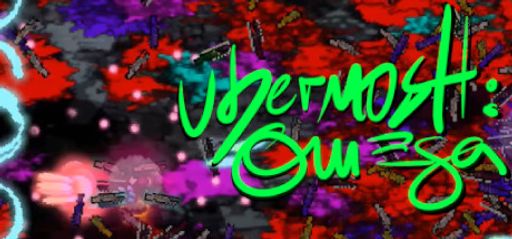Overall Impressions
I jumped into Ubermosh: Omega expecting fun arcade action. As someone who’s explored huge open worlds, I was looking for something under the flashy surface—and I found it. The game mixes smart choices, nonstop action, and tough fights. Walter Machado has polished his series with Omega, giving us tighter arenas and smarter enemy waves. Compared to other arena shooters, Omega shines with its unique upgrade paths and colorful characters. A few narrow corridors slowed me down, but the simple core gameplay is solid and satisfying.
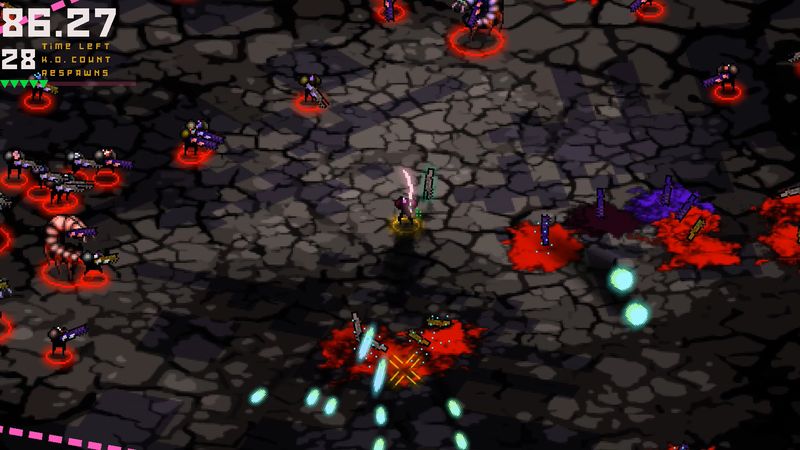
Gameplay Mechanics
Omega’s play is built on two main ideas: your character’s skills and the upgrades you pick. At the start of each run, you choose one of several powerful characters. Each one changes your weapons, movement, and dodge style. Switching from a slow heavy hitter to a speedy skirmisher instantly changed how I played. Small arenas keep the tension high. Dodge-focused characters can be tricky in tight spaces, as many players have noticed. But if you master the “screen-rock” trick—yes, you tilt your controller—you can trigger extra enemy waves and get more rewards.
After every few waves, you pick an upgrade. Do you boost fire rate or make your attacks hit more area? Each choice matters. One late-game upgrade doubled my piercing shots, letting me clear enemies in seconds. That moment felt amazing—the same rush long-time fans talk about. The system might seem simple at first, but its real depth shows up in long play sessions. It’s one of the smartest upgrade trees in arena shooters.

Story and Characters
If you’re expecting a sprawling RPG narrative, think again. Omega opts for minimalist world-building delivered via cryptic lore logs and environmental storytelling. You play as an agent sent into a corrupted digital construct, uncovering hints of a rogue AI rebellion and a desperate last stand. I loved piecing together Machado’s original game bible, hidden behind challenge-unlock screens—those fragments add genuine intrigue without ever interrupting the action. On top of that, each fighter comes with a unique backstory that emerges as you unlock more logs. My personal favorite was “Spectre,” the sneaky assassin whose sardonic one-liners between waves injected a welcome dose of personality.
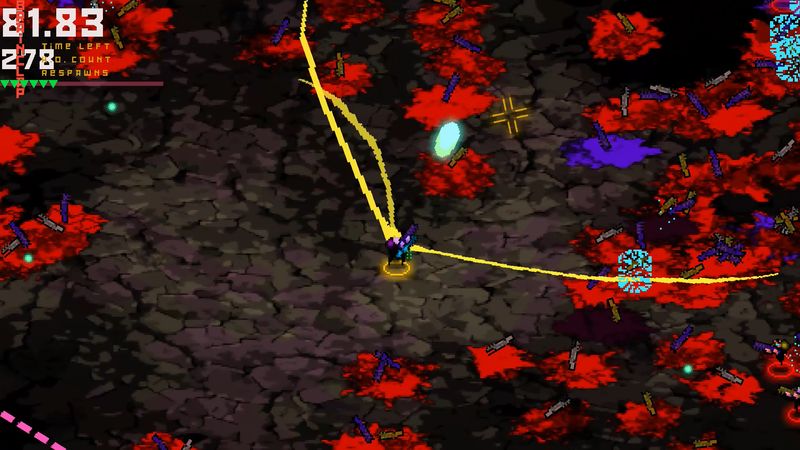
Visuals and Graphics
Running on Machado’s proprietary engine, Ubermosh: Omega maintains a steadfast 60 FPS, backed by crisp pixel art that evokes classic neon sci-fi arcades. Explosions bloom with vivid hues, and screen-shake effects enhance every shot without ever causing motion sickness. Sure, some arenas feel tighter than others—expect to snag a few walls during frantic dodges—but every environment also features interactive hazards and cleverly concealed secrets. In one memorable run, I stumbled upon a shootable wall panel that unlocked a hidden enemy wave, reinforcing my urge to explore every nook and cranny.
Sound and Music
Machado’s original soundtrack truly stands out. Pulsing synthwave tracks morph with your score streak, and during peak moments the bass drops so hard I could feel the room rumble. Sound effects bite with sharp precision, so each laser shot and explosion feels tactile. I did miss full voice acting, but the minimal use of voice lines worked in the game’s favor. Whenever Spectre quipped or the AI hissed, the impact landed perfectly. As a result, audio and gameplay feel tied together in precise harmony.
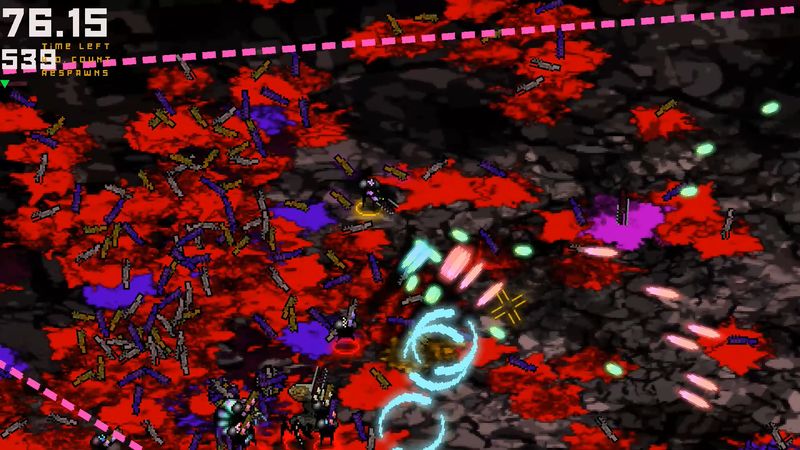
Difficulty and Replayability
Omega earns its “Very Positive” tag for good reason. The game muscles up with a steep difficulty curve. Newcomers often hit a sudden wall around wave 15, while seasoned players pushing all eight series titles back-to-back can clock 15–25 hours of endurance. I eventually broke into the high-score table, and that triumphant moment felt well-earned. Some argue the characters become overpowered by design, muting the thrill of progression. I’d counter that the real challenge lies in selecting and coupling upgrades, not just raw stats.
Replayability thrives on multiple fronts. You can pursue 100% completion by unlocking secret arenas and weapon skins. Speedrunners chase leaderboard glory, and challenge modes rotate weekly. In fact, I returned to Omega after a month away just to master a new spawn trigger exploit. That level of pull makes this game an enduring pick.
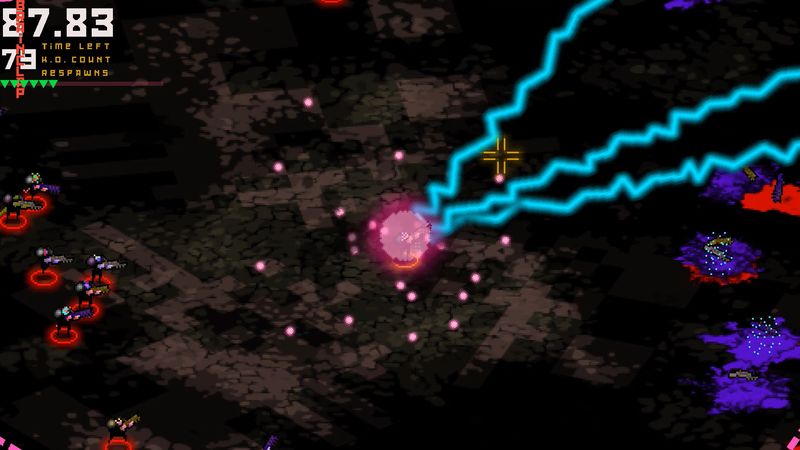
Developer Trivia
Believe it or not, Walter Machado built Omega’s core in under eight months. He works solo out of a small Lisbon studio named MachadoWorks. Early fans funded the project through a modest crowdfund in 2018, helping shape its direction. Machado credits classic arcade titles like Smash TV and Geometry Wars for inspiration. Because he prioritized player feedback, most Omega features emerged from community polls. Interestingly, the quirky screen-rocking exploit began as a bug and later became an intended secret by popular demand.

Final Thoughts
Ubermosh: Omega nails the balance between arcade simplicity and strategic depth. Its tight controls and pulsing synth soundtrack anchor every play session. Meanwhile, the minimal story rewards explorers who hunt down lore logs. Although occasional cramped spaces hamper some builds, clever spawn manipulation and upgrade choices open endless tactical routes. As an explorer at heart, I found plenty to uncover and master. Omega has unquestionably earned its place atop Walter Machado’s cult-classic series.
Score: 4.5 out of 5 Stars
In short, it squeezes you in tight arenas, but Omega’s relentless waves and rich upgrade system more than compensate. From addictive leaderboards to hidden secrets, it delivers a hard-earned thrill for both arena-shooter veterans and newcomers alike.

